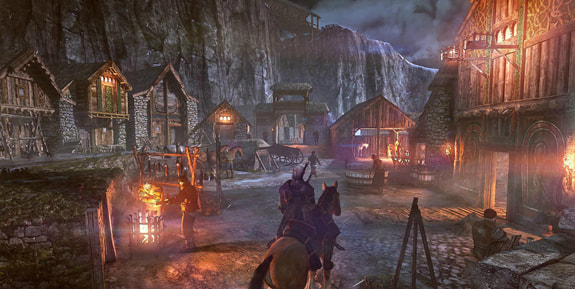 Enjoy reading articles about your favorite hobby and engaging with fellow gamers? We do too, but hosting and producing our site isn’t free. Please consider visiting our Patreon page and supporting us at any amount. We put every dollar back into the site and its production, and your help has allowed us to have certain paid article months for our contributors (such as this month). Thank you for your continued readership and your support! -David, Blog Manager My players are well aware that my preferred method of storytelling involves an open world and a similarly open narrative. I find it supremely satisfying to hand over control of the game to the players and watch them do what they will with the characters, locations, and plot threads that I’ve created. This collaborative process feels more fulfilling to me as a GM than simply guiding players through a preconceived story, allowing them a mild measure of freedom or, at worst, the illusion of freedom. The more challenging road, in the case, proves the more rewarding one for me and those GMs like me, so I’d like to provide a few tips to assist those who enjoy the sandbox style. 1) A Tale Of Two Cities I most often plan out two starting locations for my open world games. Contrary to some of the advice that will follow, these city or location plans should be extensive, including a history of the locale if possible. Several interesting people, places, and plots should be developed for exclusive use within this place to serve as hooks to get players excited and involved quickly. What’s the reason for the second city? Sometimes players want to test your open world very early on, and will want to escape their starting location quickly and with complete disregard for your creations. Show them you mean business by introducing a completely separate area for them to explore with equal depth. You could take it a step further and keep planning cities and townships until your fingers cramp up, but I would recommend only fully preparing the two, then generating a few facts about surrounding spots that players can explore. Let them decide on a destination toward the end of the session, then flesh out that location in detail. 2) Malleable Monstrosities In preparing for your open world game, you’ll want to have a few adversaries set and ready at the starting line. Your players may find themselves running afoul of cultists, underground beasties, or angry mobs as early as their first session, so I recommend preparing some easily adaptable stats that could apply to any scenario. What’s located in Old Man Miller’s basement? Well how about enemy supplement #3, complete with acid breath and physical resistance. Establish the basics of a low level encounter, but leave room for minor variations (such as the aforementioned acid breath). That way you’re not scrambling to look through monster manuals when your players stray from the expected path. The basic stats for the underground monster and an angry cultist don’t vary so much at lower levels, only their unique abilities. Keep those stat blocks around and add a dash of improvised creativity, and you’ve got a monster for any occasion. 3) Roll With The Punches Always expect the unexpected in a sandbox game. Work on your improv skills through practice and, if you have the time and interest, by listening/watching other people GM. Don’t be afraid to suffer a few setbacks in the overarching narrative; allow your players to wander down side roads and experiment with weird situations and creations. The goal of any sandbox experience is to provide players with a real sense of agency that goes beyond which attack they’ll perform on their next combat round. If that means sacrificing some narrative cohesion or dramatic tension, than I would argue that its for a good cause. With time and practice, you’ll be able to maintain momentum in your story while letting players keep the reins. To help achieve this lofty goal, I have one final piece of advice. 4) Lists! Having multiple lists at your disposal can make any game easier, but it really facilitates the operation of an open world. A list of names is a must, but you can also include a list of strange phenomena, a list of random encounters, a list of dramatic turns, and even a list of city features that you can apply to any place the player characters wander off to. I have gone so far to produce a list of side quests that were relevant to the PCs and their connections, so that they could bring their companions on a meaningful (if tangential) adventure while waiting for the main plot to catch up. If you’re feeling really bold, let your players roll on the lists. In one instance, I created a village of assassins that fired diseased darts at their enemies. The players that failed their Constitution Saves rolled three times on three tables to discover the random illness with which they were now plagued. Some combinations proved to be as entertaining as they were deadly! My final piece of advice to prospective GMs is to not fear the open world. Taking just a few preparatory steps can lead you into a world that players not only explore, but also help to create. I think that everyone at the table will find this to be rewarding and enjoyable, no matter which narrative carries them through the game. Share your advice with me and the community! Comments and questions are welcome, as always. David Horwitz is a gamer and freelance writer with an obsession for exploring new forms of leisure. If you’re looking for an inquisitive mind and a deft hand, or just want to chat about gaming, contact him at www.davidhorwitzwrites.com/contact . Picture Reference: https://noplatform.wordpress.com/2013/02/06/can-the-witcher-3-become-a-good-open-world-story-based-rpg/ |
All blog materials created and developed by the staff here at High Level Games Archives
April 2023
Categories
All
|
Proudly powered by Weebly



 RSS Feed
RSS Feed